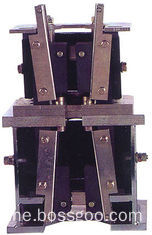"China's manufacturing industry is facing double squeeze. Enterprises that do not implement smart manufacturing may disappear in the next five to ten years," said Li Dong, deputy director of the Ministry of Industry and Information Technology and director of the National Major Technical Equipment Office in Chongqing on the 22nd. The first China (Chongqing) International Intelligent Manufacturing Technology and Equipment Fair was opened in Chongqing on the same day. At the “International Smart Manufacturing Summit†held here, experts and scholars from home and abroad, and representatives of companies focused on topics such as green, smart and product innovation. Interactive exchanges, together look forward to the development prospects of the industry. According to the statistics of the World Bank, China's manufacturing industry increased by USD 3.2 trillion in 2014, and 220 industrial products ranked first in the world. Since 2011, China has become the world's largest manufacturing country for five consecutive years. However, China's manufacturing industry has problems such as weak independent innovation capability, outstanding product quality problems, weak industrial infrastructure, and low level of information technology. Regarding the many shortcomings of "Made in China", Li Dong analyzed that China's manufacturing industry is facing "double squeeze." Looking specifically at internal factors, China's economy has entered a period of moderate growth with a period of rapid growth, and low-end industries have gradually lost competitiveness. The economic development mode of the previous period was not sustainable. From an external point of view, developed countries in Europe and the United States have adopted the "reindustrialization" strategy, seeking to continue to lead the industry in terms of technology and industry, seizing the high end of the manufacturing industry, and further distance from China. At the same time, developing countries such as India and Vietnam have to accept labor-intensive industries for lower labor costs and seize the low-end market for manufacturing. "In this case, smart manufacturing will inevitably trigger changes in China's manufacturing industry." Li Dong said, including product intelligence, intelligent production processes, intelligent management, etc. will be the development trend of China's manufacturing industry. In this transformation, enterprises must exert their enthusiasm and endogenous motivation to solve the problems of product technology, price, and energy consumption brought about by market competition. Through the implementation of smart manufacturing, enterprises can enhance the overall competitiveness of China's manufacturing industry. Smart manufacturing will trigger a new round of industrial revolution and foster new production methods. Qu Xianming, director of the Manufacturing Research Office of the Chinese Academy of Engineering, agrees with Li Dong. Qu Xianming once participated in the formulation of the "Made in China 2025" plan. In his view, besides the enterprises' own efforts, the transformation and upgrading of China's manufacturing industry also requires the government to provide directional guidance for smart manufacturing, and formulate corresponding fiscal, taxation, innovation, and demonstration promotion. , industrialization and other policy measures to encourage companies to implement smart manufacturing. “This will help to mobilize the strength and resources of governments at all levels and in all walks of life, form a situation of linkage between the two sides, focus on the effective use of all aspects of advantageous resources, and promote the intelligent transformation of China's manufacturing industry,†said Qu Xianming. Xu Honghai, president of the Shanghai Institute of Industrial Automation Instrumentation, suggested that the implementation of smart manufacturing in China's manufacturing industry must proceed from reality. It is necessary to promote the whole industry as well as to guide the classification. Some enterprises must also pay close attention to the automation and digitalization course. The conditions are good. Enterprises should move toward higher goals and strive for the first breakthrough.
Elevator Safety Gear Elevator Safety Gear, Lift Safety Gear, Two-way Elevator Safety Gear Ningbo Xinda Elevator Traction Technology Co., Ltd. , https://www.xinda-elevator.com
Elevator Safety Gear
product

